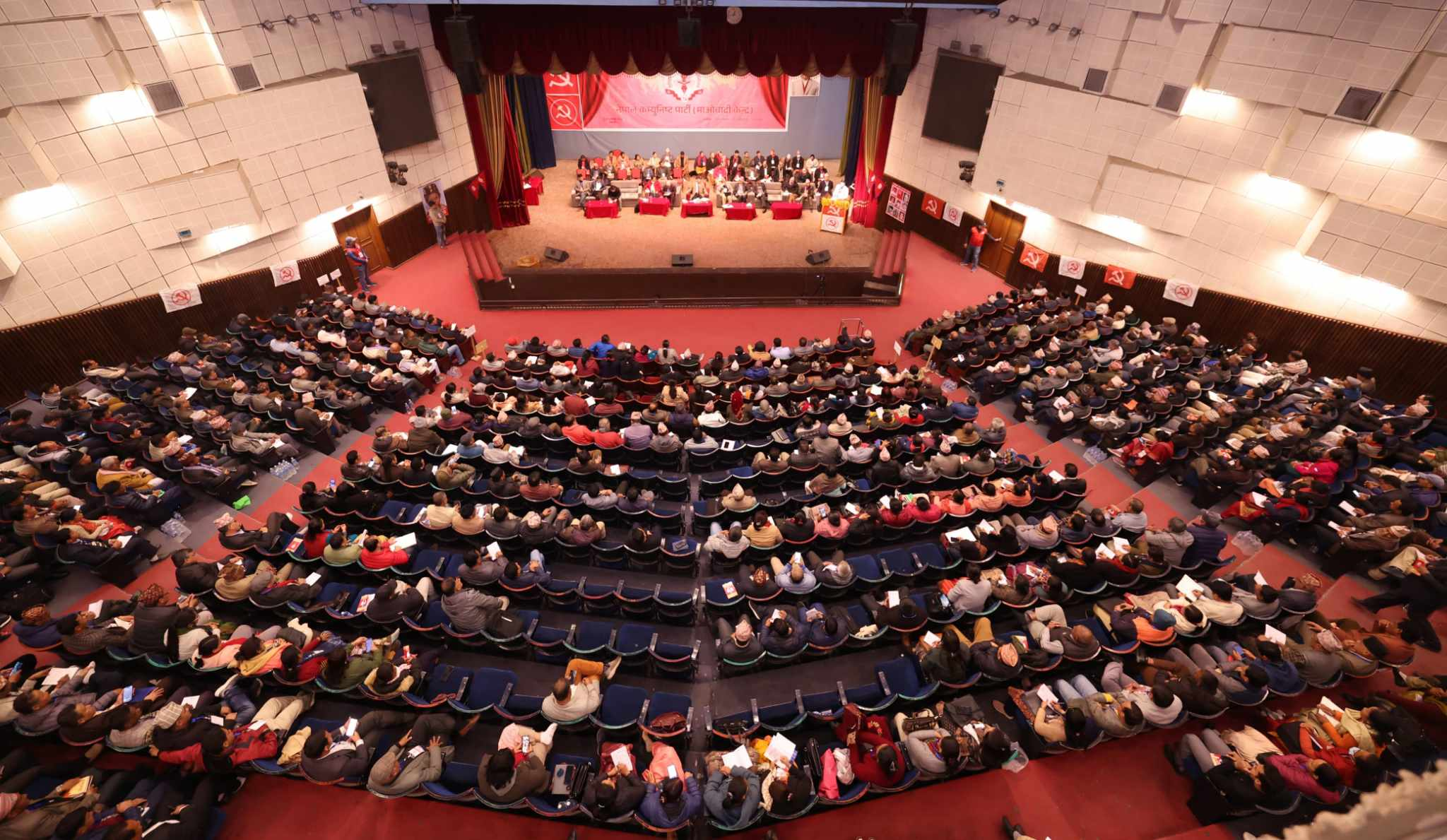0%

Statute Convention of Maoist Center at Nepal Academy, Kamaladi in Kathmandu.
KATHMANDU: The Maoist Center concluded its first Statute Convention, culminating in the approval of the party’s statute.
Prime Minister and Party Chairman Pushpa Kamal Dahal “Prachanda” steered the statute convention to fruition, incorporating valuable insights gleaned from discussions within diverse groups during the presentation of the draft statute that started on February 13 at Nepal Academy, Kamaladi in Kathmandu.
The Maoist Center also announced its decision to maintain its existing name and election symbol.
Party Chairman Prachanda affirmed that the party would not undergo any alterations in its name or election symbol, which features a hammer and sickle enclosed within a circle.
Despite suggestions put forth by a group formed during the Statute Convention recommending a change in the party’s name and election symbol, the Maoist Center remains steadfast in its commitment to its established identity.
Marked by its inclusivity, the convention featured the participation of individuals distributed across 20 groups.
The spirit and comprehensive approach taken in the convention were instrumental in shaping the final statute, which received the nod after assimilating suggestions from these groups.
Meanwhile, Prachanda revealed plans for the Central Committee of CPN-Maoist Center.
Chairman Dahal disclosed that a central party office comprising 11 individuals will be formed, marking a strategic decision for the party’s organizational structure.
A noteworthy shift was also announced, as the central committee will now be elected through open elections.
The party has also decided to augment the powers of the existing District Coordination Committee within the province, building upon their earlier delegation of authority to municipal-level committees.
While there was a proposal to reduce the central committee to 151 members, it has been ultimately decided to maintain a membership of 199, reflecting a collective choice for the party’s structure and representation.